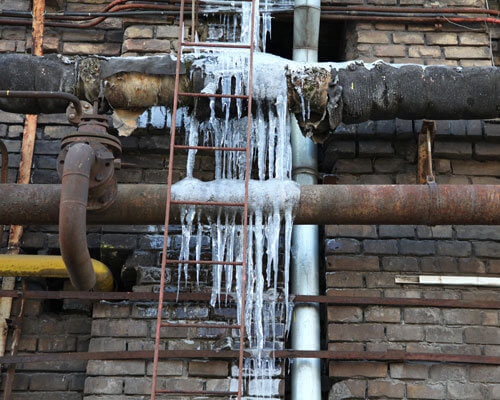What are your thoughts on How to prepare your home plumbing for winter weather?

Cold weather can ruin your plumbing, particularly by freezing pipelines. Here's exactly how to prevent it from happening and what to do if it does.
Intro
As temperature levels drop, the risk of icy pipes increases, potentially causing pricey repairs and water damage. Comprehending exactly how to prevent icy pipelines is essential for home owners in chilly climates.
Avoidance Tips
Shielding susceptible pipelines
Cover pipelines in insulation sleeves or utilize warm tape to safeguard them from freezing temperature levels. Focus on pipes in unheated or outside locations of the home.
Heating methods
Keep interior spaces sufficiently warmed, particularly locations with plumbing. Open cupboard doors to allow cozy air to circulate around pipes under sinks.
Exactly how to recognize frozen pipelines
Seek lowered water flow from faucets, unusual smells or sounds from pipelines, and visible frost on revealed pipelines.
Long-Term Solutions
Structural adjustments
Consider rerouting pipelines away from exterior walls or unheated locations. Include additional insulation to attics, basements, and crawl spaces.
Upgrading insulation
Invest in high-quality insulation for pipelines, attic rooms, and wall surfaces. Proper insulation assists preserve constant temperatures and reduces the threat of frozen pipelines.
Protecting Outdoor Pipes
Yard hoses and outdoor faucets
Separate and drain pipes garden pipes before winter season. Set up frost-proof faucets or cover outside faucets with insulated caps.
Comprehending Frozen Pipelines
What triggers pipes to ice up?
Pipelines ice up when revealed to temperatures below 32 ° F (0 ° C) for expanded durations. As water inside the pipelines ices up, it expands, putting pressure on the pipeline wall surfaces and potentially creating them to burst.
Threats and damages
Frozen pipes can bring about water system disturbances, residential property damage, and costly repair services. Ruptured pipelines can flood homes and trigger considerable structural damage.
Signs of Frozen Pipes
Recognizing icy pipes early can avoid them from bursting.
What to Do If Your Pipes Freeze
Immediate activities to take
If you presume icy pipelines, keep taps available to alleviate pressure as the ice thaws. Utilize a hairdryer or towels soaked in warm water to thaw pipes gradually.
Conclusion
Protecting against frozen pipelines requires aggressive measures and fast responses. By comprehending the reasons, indications, and preventive measures, homeowners can secure their pipes during winter.
5 Ways to Prevent Frozen Pipes
Drain Outdoor Faucets and Disconnect Hoses
First, close the shut-off valve that controls the flow of water in the pipe to your outdoor faucet. Then, head outside to disconnect and drain your hose and open the outdoor faucet to allow the water to completely drain out of the line. Turn off the faucet when done. Finally, head back to the shut-off valve and drain the remaining water inside the pipe into a bucket or container. Additionally, if you have a home irrigation system, you should consider hiring an expert to clear the system of water each year.
Insulate Pipes
One of the best and most cost-effective methods for preventing frozen water pipes is to wrap your pipes with insulation. This is especially important for areas in your home that aren’t exposed to heat, such as an attic. We suggest using foam sleeves, which can typically be found at your local hardware store.
Keep Heat Running at 65
Your pipes are located inside your walls, and the temperature there is much colder than the rest of the house. To prevent your pipes from freezing, The Insurance Information Institute suggests that you keep your home heated to at least 65 degrees, even when traveling. You may want to invest in smart devices that can keep an eye on the temperature in your home while you’re away.
Leave Water Dripping
Moving water — even a small trickle — can prevent ice from forming inside your pipes. When freezing temps are imminent, start a drip of water from all faucets that serve exposed pipes. Leaving a few faucets running will also help relieve pressure inside the pipes and help prevent a rupture if the water inside freezes.
Open Cupboard Doors
Warm your kitchen and bathroom pipes by opening cupboards and vanities. You should also leave your interior doors ajar to help warm air circulate evenly throughout your home.

Do you enjoy reading about How To Avoid Freezing Pipes? Try leaving a remark down the page. We will be glad to know your insights about this article. We are looking forward to see you back again later on. Do you know somebody who is occupied with the niche? Feel free to share it. Many thanks for going through it.
Check It Out
Comments on “Avoiding Frozen Pipes in Winter: Pro Advice”